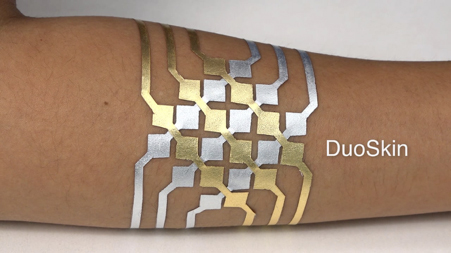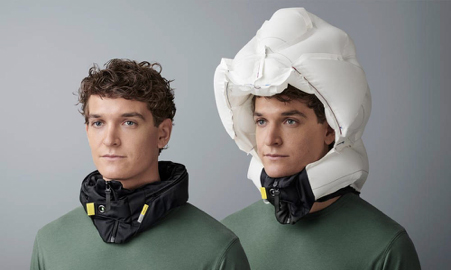Ever wondered how would it feel to have an extension to your body that just feels natural enough to be like your own? A sixth thumb or a brain that saves your dreams? Before you tell me that’s a thing of the future, let me introduce you to Human Augmentation (HA). Here we go!

What’s Human Augmentation (HA)?
It is a field of research that aims to improve human abilities through technical advancements. Sometimes referred to as “Human 2.0”. It’s an important element of the human body and works on developing cognitive and physical benefits.
HA increases human health, quality of life, and functional performance through technology. Devices and implants that contribute to advanced sensory capabilities, such as glasses for viewing augmented visual content, augmented skull-feet, bionic joints, integrated scans, next-generation hearing aid implants for auditory sensing and processing, prosthetic windpipe for throat and neurological stimulation techniques to improve motor function, are all examples of human-augmentation applications. The possibilities are endless.
HA provides disabled individuals the strength they’ve been missing. It changes what it means to be a human and takes human capabilities to the next level.
It enhances human productivity and becomes part of the human identity through the stages mentioned below-
Human Augmentation is divided into 3 types:
1. Replication
It’s the first level of HA. Any augmentation that repeats anything that a normal individual can already perform is referred to as replication.
Prosthetics is a real-world example. A prosthetic leg or arm does not provide the user with a skill. It merely duplicates a pre-existing human function and makes it available to someone who didn’t have it before.
Examples include:
eSight: A wearable device that works similarly to spectacles and allows blind individuals to view their surroundings. The device features front-facing cameras that capture the surrounding world in near-eye quality and show it on a screen directly in front of the wearer’s eyes.
Bioprinting: The method of employing 3D printing technology to create organic tissues (organs, bones, skin, etc.). Although this technology is still in its inception, it has the potential to fundamentally transform the medical sector.
2. Supplementation
It’s the second level of HA. This advances replication by allowing us to accomplish things that are already humanly feasible but better i.e., run faster, jump higher, and persevere longer.
Some examples of Supplementation are:
Neuralink: Elon Musk’s initiative with the eventual objective of developing a Brain-Computer Interface (BCI). If the research succeeds, people will be able to connect with computers on a neurological level. This project is still in its early stages.
Waverly Labs: has developed a pair of earphones that can translate conversations in real-time, removing the need to learn a foreign language entirely. Although the number of languages that can be translated is restricted and accuracy isn’t perfect, it’s a significant step forward.
3. Exceeding
It’s the ultimate level of HA. It permits humans to perform beyond their regular capabilities such as flying.
Examples include:
Artificial Blood Cell: Robert Freitas Jr.’s research, while still theoretical, has looked into the possibility of creating artificial blood cells. Studies of mammals that can hold their breath underwater for long durations, such as whales and dolphins inspired this concept. Their blood cells are thought to be better at storing oxygen, which we might be able to replicate.
Synthetic Memory Chip: Hard drives keep their memories far better than humans do. They can also access that memory more quickly and precisely. This notion inspired Theodore Berger, a neurologist, to investigate synthetic memory chips that might be implanted in the human brain. While the technology is currently in its early stages, it has the potential to provide people with “perfect” memories that never forget information.
Having said that, where is the actual implementation of HA in the industry? Has the implementation already begun?
Following innovations are the answers to these questions.
1. Third thumb
Dani Clode, a designer and researcher at the Plasticity Lab at University College London, is the creator of The Third Thumb. Her device is a foot-controlled 3D-printed prosthesis.
How does Third thumb work?
Pressure sensors beneath the big toes detect movement and send the data to a watch strap with two motors that control the thumb through Bowden wires, similar to those used in bicycle brakes. The flexible thumb has two degrees of flexibility (each controlled by a big toe). It functions identically to your natural finger.

2. Duoskin Tattoo
DuoSkin is a manufacturing method that allows anybody to manufacture personalised functional devices that may be worn directly on the skin. It shows three forms of on-skin interfaces- touch sensing, output display, and wireless communication. DuoSkin’s on-skin devices are inspired by the aesthetics of metallic jewelry-like temporary tattoos.
Users may utilise DuoSkin devices to operate their mobile devices, show information, and save data on their skin while also making a fashion statement.

3. Airbag Helmet
Wearing a Hovding collar around your neck monitors the movements of your head 200 times a second. This collar inflates into a helmet when it senses a collision. The super protective headgear inflates in 0.1 seconds, making your skull nearly indestructible.

4. Enchroma Glasses
These glasses are made for Colourblind individuals. They can view the entire spectrum of light using these glasses.
EnChroma creates optical lens technology that precisely filters out wavelengths of light at the exact point when colour sensitivity is confused or overlapped too much. Thus, helping to view objects in full colour.

5. ORA-X Headphones
It’s a tablet that can be worn. Android platform is used to run these smart headphones. ORA-X headphones improve and broaden the listening experience by allowing the user to engage with what they’re hearing. You can see new music videos, get notifications about your favourite musicians, and do a lot more.

Other examples include Live Translation Wearables, Exo Glove Poly and Iron Man Suit.
With a huge demand for such high technology-driven gadgets, HA not only assists in the technical development of the world but also provides a hand to the disabled. Its market doesn’t end here.
The Human Augmentation Industry is expected to expand at a CAGR of 23.9 percent from USD 70.9 billion in 2019 to USD 206.9 billion by 2024.
During the forecast period of 2020 to 2026, the Human Augmentation market is expected to grow at a rapid pace.

High technology-driven devices in healthcare & armed forces, the introduction of artificial intelligence in wearable devices, and the rising popularity of wearable augmentation goods are all major drivers for the HA market expansion.





Amazing Research,Simple words used for commoners to understand.